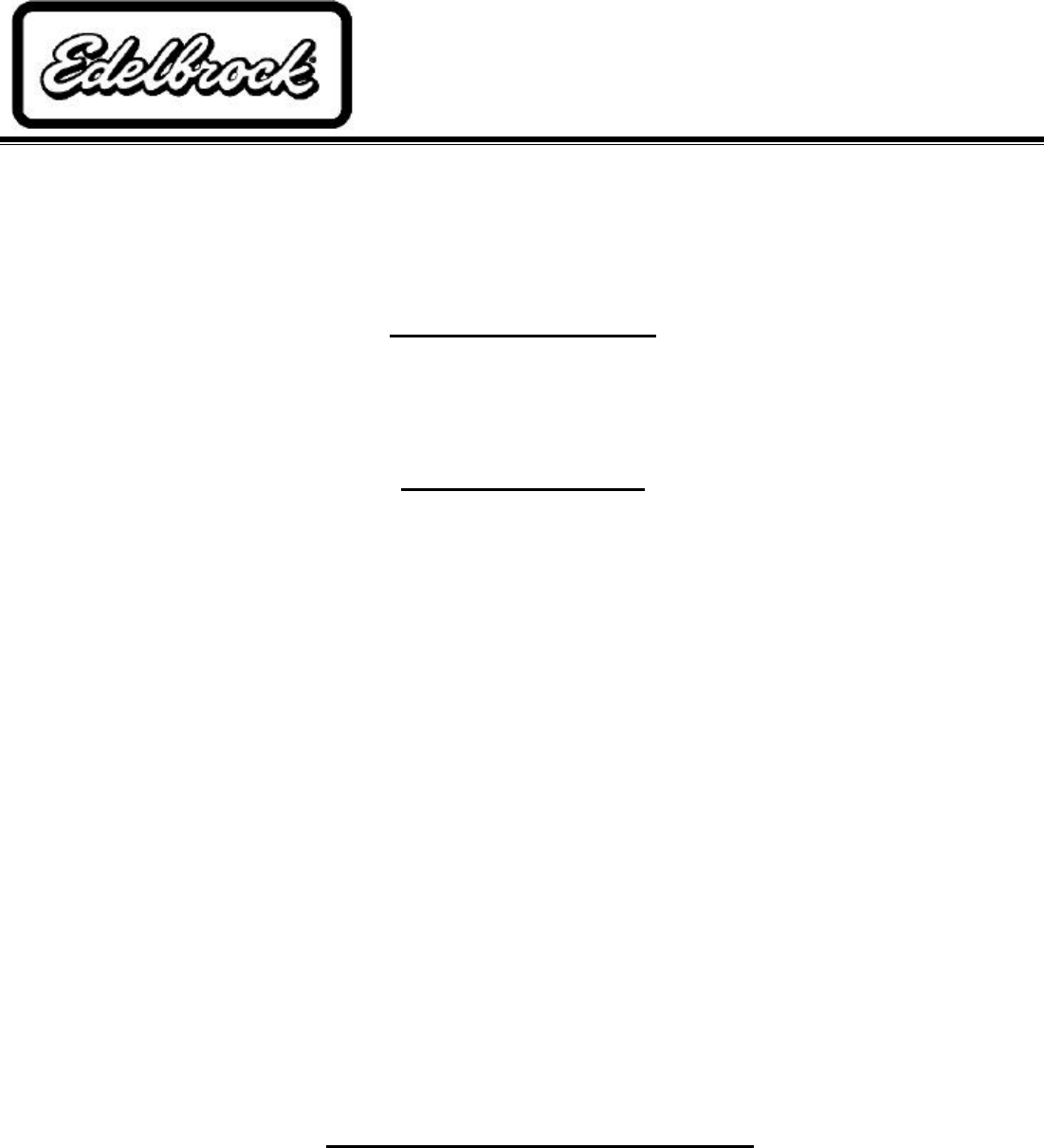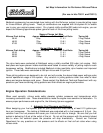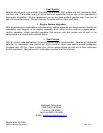
Jet Map Information for Performer Nitrous Plates
(For use in kits 70011 and 70012)
Edelbrock engineering has conducted dyno testing with the Performer system to provide jetting maps
for three different jetting levels. These jet combinations are supplied with this system kit to enable
you to vary your engine’s power output. On a typical mildly modified 350 cubic-inch engine, you can
expect the following approximate power gains for each of the three jetting levels:
Square-Flange Jet Map
Nitrous/Fuel Jetting Approx. HP Gains Final Air/Fuel Ratio Timing Adj.
38/46 50hp 11.0:1 2 Deg. Retard.
46/53 75hp 10.8:1 3 Deg. Retard.
57/65 100hp 10.6:1 4 Deg. Retard
Spread-Bore Jet Map
Nitrous/Fuel Jetting Approx. HP Gains Final Air/Fuel Ratio Timing Adj.
40/45 50hp 11.4:1 2 Deg. Retard.
50/55 75hp 11.0:1 3 Deg. Retard.
59/65 100hp 10.6:1 4 Deg. Retard
The dyno tests were conducted at Edelbrock using a mildly modified 350 cubic inch engine. Both
dual-plane and open-plenum intake manifolds were tested to ensure validity of jetting maps for each
horsepower setting. Modifications included Edelbrock intake manifolds, dyno headers and improved
ignition. These tests were conducted at 950 psi nitrous and 5.5 psi fuel.
These jetting patterns are designed to be rich and will provide the above-listed power settings under
normal operational usage of this system. Any variation in jetting patterns other than what is listed
above and engine damage could occur. Please contact the Edelbrock Technical Department with any
questions you have concerning jetting patterns and their effects on engine performance.
Engine Operation Considerations
When used correctly, nitrous oxide safely elevates cylinder pressures and temperatures while
increasing combustion rate. These characteristics make the engine more sensitive to detonation. To
ensure proper performance and engine life, the following tips are suggested:
§ Adequate Fuel Pressure and Delivery
When designing your fuel system, plan on your pumps and lines flowing at least 0.10 gallons per
hour per horsepower. The testing at Edelbrock was conducted with a fuel pressure of 5.5 psi. Any
variation from this fuel pressure will cause your final air/fuel ratio to change. Be sure that you fuel
system is delivering 5.5 psi at the outlet of the jet. Do not set the pressure with the solenoid closed
due to when the solenoid opens the pressure will drop dramatically. Consult our Technical
Department for any questions on fuel pressure and its effects on final air/fuel ratios when using
nitrous oxide.




